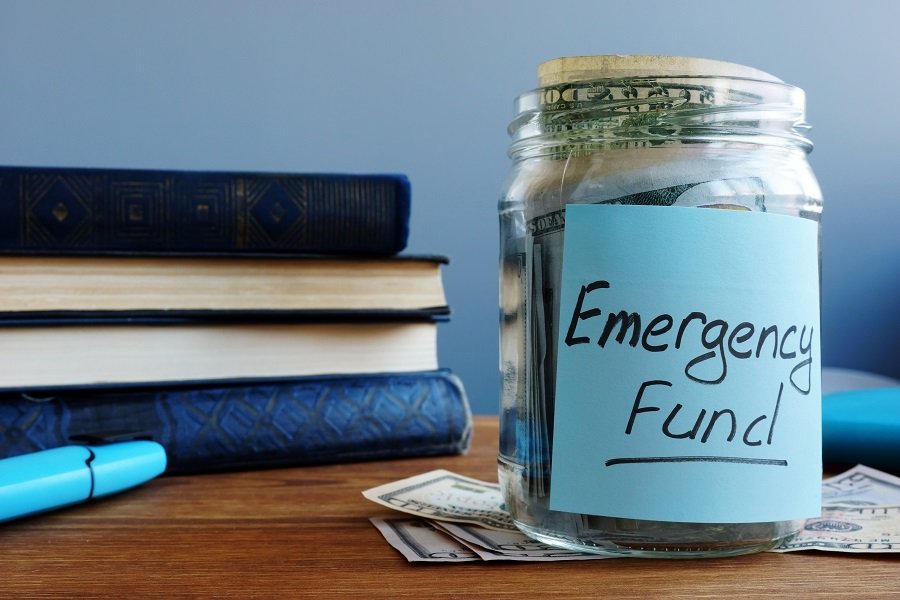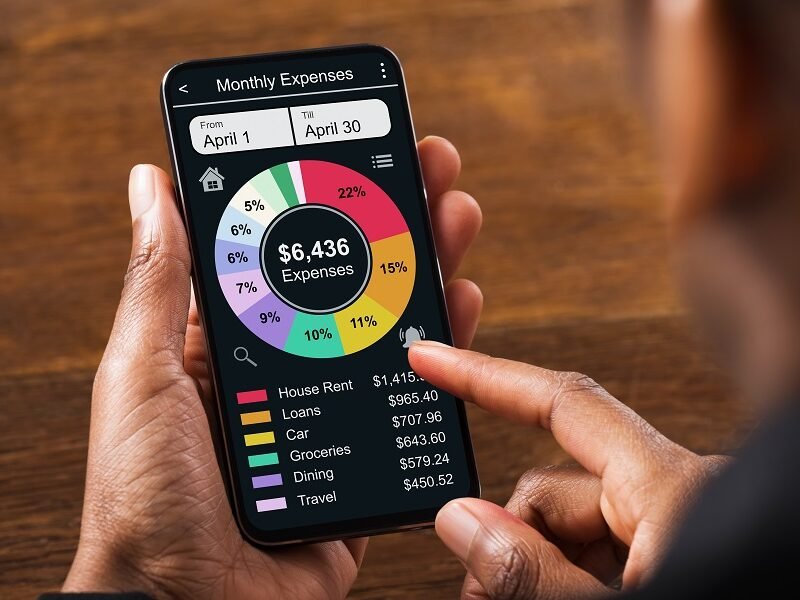Emergency Savings: Everything You Need to Know

Table of Contents
What is an Emergency Savings / Fund
Defining what an Emergency Savings is simple: it is a lump sum of money or resources that is set aside and used exclusively for emergencies. Usually, it’s just cash held in a savings account. But perhaps it may be better to list a few things that an Emergency Savings is not to get a better grasp:
- It is not for periodic vehicle maintenance
- Your children’s college tuition
- A vacation (even though you deserve it)
- Helping to pay for a wedding
- A down payment on a house
An Emergency Savings should be set aside for expenses that truly constitute an emergency. Do you plan an emergency? No! So, you shouldn’t plan to spend your emergency fund either. When you are desperate, and you need the ability to pay for things that affect life, limb, or eyesight then you know that you can withdraw from your emergency fund.
Here are few scenarios where drawing from your emergency fund may make sense:
- You are stranded in a foreign country due to a pandemic
- You lost your job, and the utility payment is due
- You or someone in your family needs food
- You or someone in your family require shelter
- You or someone in your family require medical attention
This list is much less exciting than the first one. If you feel you meet any of the bullet points in the true emergency list, I think we can all agree that you have officially hit hard times. Time to prepare to spend what you set aside, albeit with prudence. An emergency fund is a way to self-insure against life’s disasters. Having a properly funded emergency fund is a requirement for proper financial planning and in general for being a productive adult.
How Much Should I Save
Now that we know what having an emergency savings means and who should have one (all adults, even those folks just pretending), it’s time to figure out how much or how large a fund should be. The size of the actual fund should be determined by both what it will allow you to do (how many months of expenses) and by your risk tolerance.
There are several well-known financial planning gurus and organizations with credibility on this topic. Below is a summary of the guidance they currently profess. Keep in mind that your risk tolerance is a highly personal topic. The ranges in months of expenses listed should be used as a minimum only… if you feel safer with more on hand then by all means do so.
- Dave Ramsey – Dave has a unique approach to saving for an emergency fund. His system has individuals socking away $1,000 as a start. Once folks have reached a certain level of out-of-debtedness he recommends an emergency fund that can pay for 3 months’ worth of expenses if you have a steady 2 income household. If someone in your family unit requires ongoing medical care, he recommends 6 months of expense.
- Suze Orman – Suze has changed and updated her recommendations. Currently, she recommends an emergency fund that can pay for a whopping 1 years’ worth of expenses. This amount of money could be difficult to stash away, however, she does highlight that it can be saved over time.
- ConsumerFinance.gov – You tax dollars have helped pay for ConsumerFinance.gov. The website gives no specific guidance other than to ‘think about the most common kind of unexpected expenses you’ve had in the past and how much they cost.’ It makes sense that the Federal Government has no idea how much to save give its current budget deficits, but don’t wait for an unexpected expense to decimate your quality of life… do the legwork now.
How Should I Save for an Emergency Fund?
Determining how to set aside money for an emergency fund comes down to simply ensuring that you have a little bit each month or paycheck earmarked for your emergency fund. Have the money deposit automated at the beginning of the month or on pay day.
Making the initial decision to starting saving is the important part… allowing yourself subsequent opportunities to change that decision is not wise. Automation will help you slay the internal dragons that would have you blow your money on $7 lattes.
Set a target date to have your emergency fund complete. Divide the number of months or paychecks between now and your goal and determine if that’s a viable amount. If not, then adjust your goals to make sense.
Stick to your plan and make sure you think about how many months and what your fund would pay for yearly. Everything, including emergencies, tick up in cost with inflation over time. As your family and responsibilities increase, you may also find that your emergencies also go up in price and frequency. Adjust your target amount and update the allotment in your budget.
What If I am Retired
Being retired doesn’t lessen your sensitivity to emergencies… frankly, it can likely heighten it. Establishing an emergency fund should be done well prior to your actual retirement date. If you are retiring without any need for a part time job then you can cross ‘job loss‘ off the emergency list, however, ‘medical emergency‘ will probably need to be highlighted.
If you find yourself in retirement with a depleted emergency fund due to having an actual emergency, don’t fret! Treat it as if you were still in the workforce: add a small amount each month in your budget to replenish your savings. This may take sacrifice; however, it is preferable to touching your invested nest egg outside of your scheduled withdrawal amounts.
If you find that you have had to reach into your emergency fund multiple times, it may be time to redefine what you consider an emergency… that is if you want to stay retired.
If your emergencies become routine, then they are no longer emergencies and should be treated as something that you can save for in advance. Consider adding an entirely new line item to your budget to meet that new expense… if you don’t have the money in your budget then you may need to rethink retirement. Getting a part time job now is better than being desperate later.
Where should I put my Emergency Savings
You should put your emergency savings somewhere that is both safe and that can be accessed quickly (liquid). No, you shouldn’t wrap your money in cellophane and store it under your mattress… you wouldn’t sleep well at night. Rather, you should put it into a savings account that is insured by the Federal Deposit Insurance Corporation (FDIC).
The FDIC is a government agency with the responsibility of maintaining ‘public confidence in the nation’s financial system.’ As such, they will ensure the money you put into an FDIC Insured Account up to $250,000 per depositor, per insured bank, for each eligible account.
All major banks offer savings accounts that are FDIC insured. There are many online banks, however, that offer high yield savings accounts that may NOT be FDIC insured.
Another option is to place your funds at a credit union. Credit Unions do not carry FDIC insurance since they are not banks, however, the National Credit Union Administration (NCUA) provides similar insurance policy.

Here is a quick list of solid choices to put your emergency fund:
- FDIC Insured Savings Account
- FDIC Insured Money Market Account (different from Money Market Funds)
- NCUA Insured Savings Account
- NCUA Insured Money Market Account
Do your homework, and make sure that wherever you store your money in the case of an emergency it is insured by the FDIC or NCUA. If a national emergency strikes, and you lose your job and need access to capital, it is very possible that your bank may also be having an emergency of its own… FDIC and NCUA insurance guarantees that your money will be safe.
Places you should not put your emergency fund:
- The Stock Market
- Any type of Mutual Fund
- Under Your Mattress
- In an account that is not liquid
- Retirement Accounts
When looking at which bank or credit union you should store your emergency fund, start with wherever you have a checking account first. If they are insured and provide an easy way to transfer funds from your savings account to your checking account, then this may meet the liquidity requirement. Being able to access your funds quickly during an emergency is an absolute must. Being able to quickly send those funds to your checking account, where you normally do most of your spending, is an easy win.
But… I am about to buy a House
Hopefully, you will find yourself not having to tap your emergency funds very often if at all. However, the longer you go without having to realize the value of having such a repository you may find yourself tempted to use them for other means. If you are considering buying a house, it can be difficult to scratch together enough money for a sizeable down payment… but don’t be fooled, this is not what your emergency fund is for.
There is no doubt that saving for a house, particularly if it’s your first home, can be difficult and painful. However, once you purchase a home you will find that your risk of having an emergency goes up substantially. Whether the HVAC needs to be replaced in the dead of summer, or a routine pest inspection leads to a full-on war with termites you will need to have more capital set aside for emergencies once you become a homeowner.
The truth of the matter is that if you cannot afford a home without dipping into your emergency fund, then you simply cannot afford to buy a home. Don’t let emotions or false logic lead towards making a purchase that you are not prepared to execute (even if the bank says you can afford it).
Should I Invest my Emergency Savings
You should NEVER invest your emergency fund. Being able to access a set amount of funds during a crisis is the entire point of having an emergency savings. If the emergency that you are experiencing happens during a down period of the market, you may find yourself with less capital to attack a problem then you had planned.
With proper planning, you should have set aside enough savings for a certain amount of expenses based on your risk tolerance. Don’t feel the need to set aside additional funds unless there is a reason. Once you have finished funding your emergency savings, then you can set your priority towards other things such as paying down debt and building your investment portfolio.
Reevaluating Amount Saved
You should reevaluate how much you have saved for emergencies on two occasions:
- Annually (When you file your taxes is an excellent time)
- During any major life event such as marriage, buying a house, etc.
When you consider how much you have saved, you may find that your situation has changed, and you no longer need as much stowed away as you had before. Examples of when this might occur are if you recently sold a house and moved into an apartment or your children flew the nest.
Alternatively, major life events may result in an amount that goes up. Marriage, buying a house, having children, medical issues, or losing a job may be big drivers but there are many other reasons out there that you may not even have on your radar (e.g. worldwide pandemic).
Whether your risks go up or down, you should go through the thought process and adjust your targets at least annually.
Conclusion and Warning
Saving for emergencies is an important component of developing a robust financial infrastructure for your life. With a little thought and a small amount set aside each month, you will find that the ability to handle life’s ups and downs becomes more manageable. By insuring ourselves with an emergency fund, we help limit the anxiety unknown monetary expenses can bring into our lives.
With all the information in this article, I would like to remind all readers that I write exclusively for entertainment. The views and recommendations expressed are solely my opinion. If you are looking for specific advice for your situation, you should do your own research and consider hiring a Financial Advisor that has your best interests in mind.
Guy Money
As a formally trained Data Scientist I find excitement in writing about Personal Finance and how to view it through a lens filtered by data. I am excited about helping others build financial moats while at the same time helping to make the world a more livable and friendly place.



